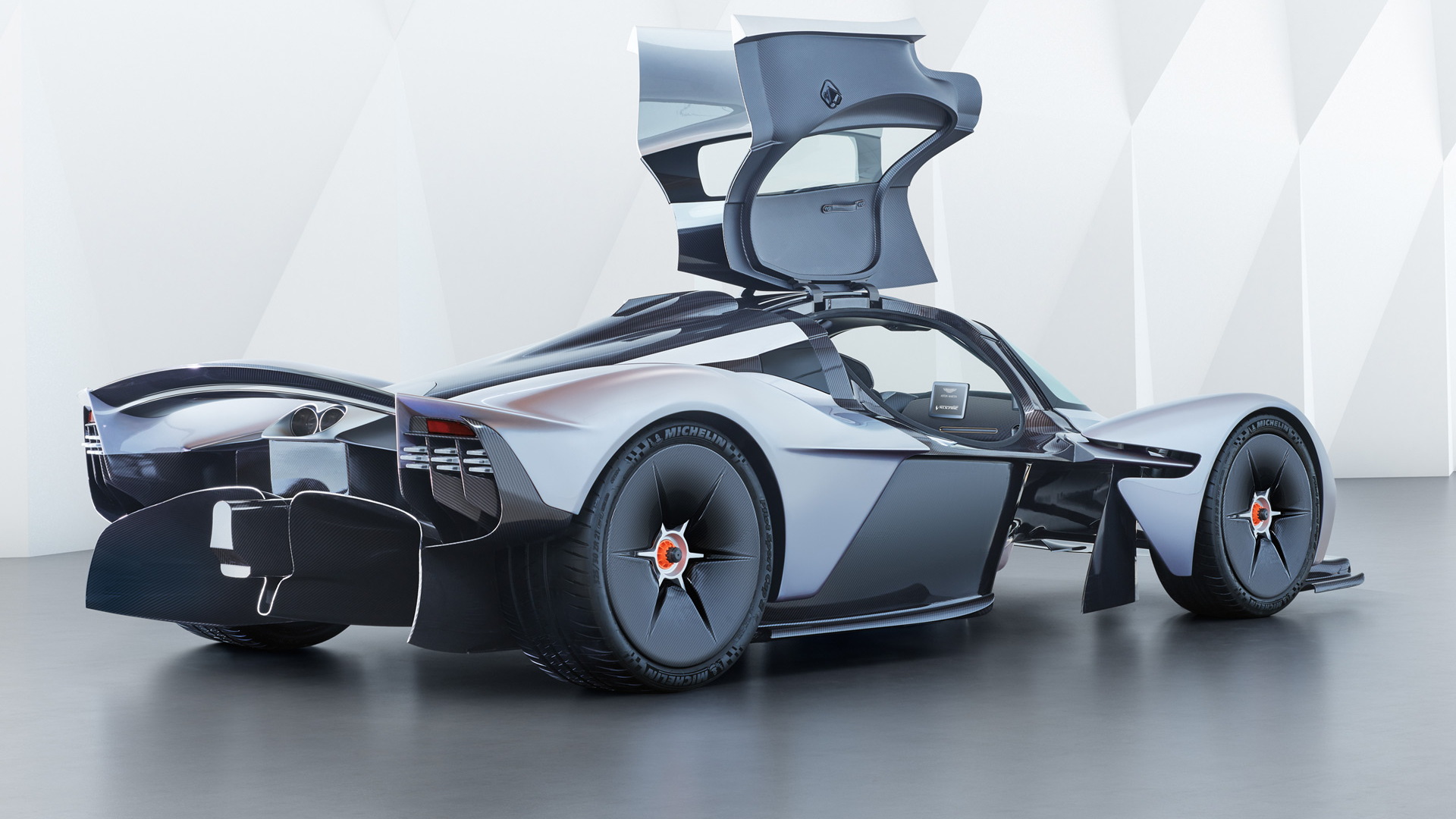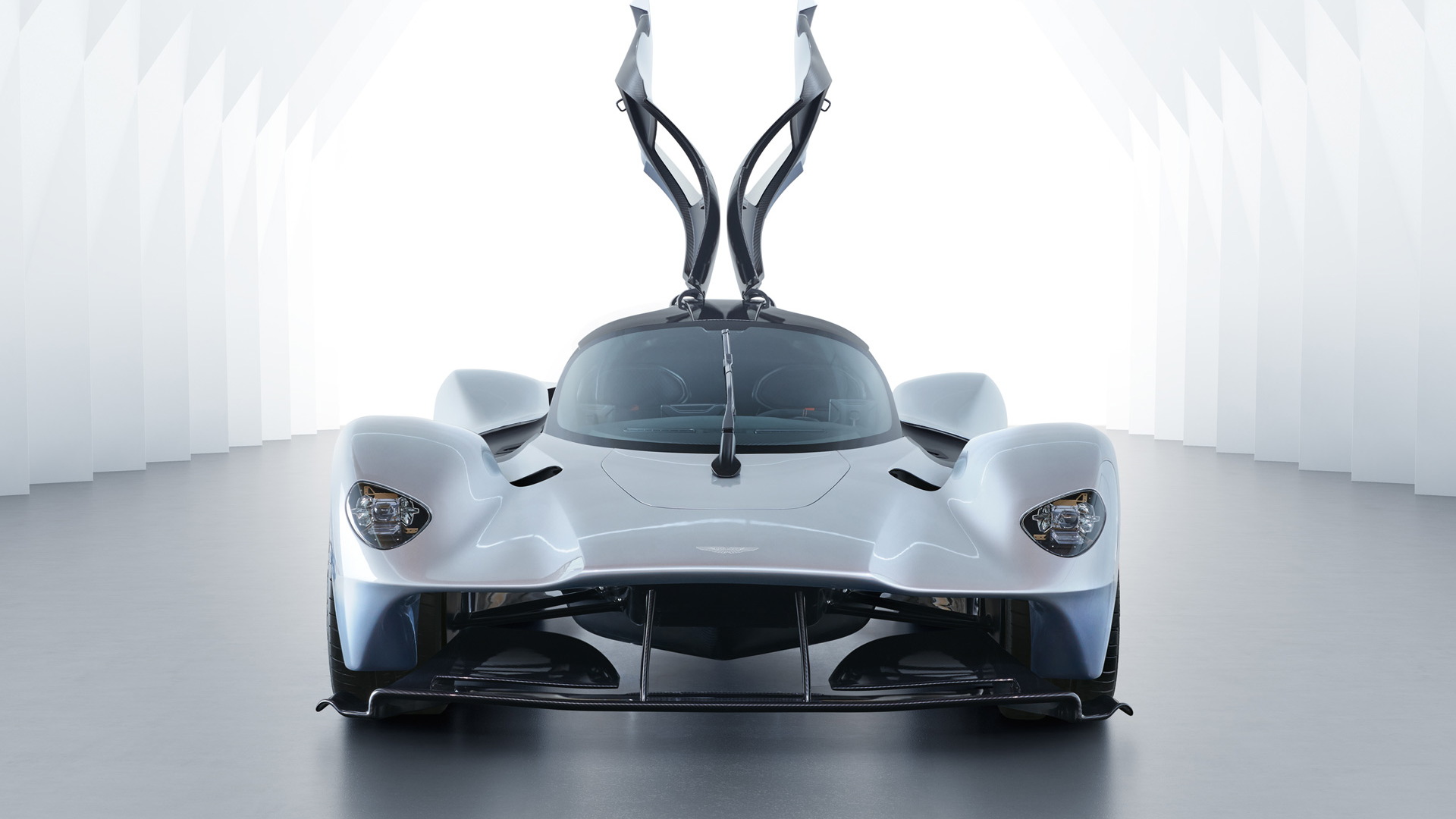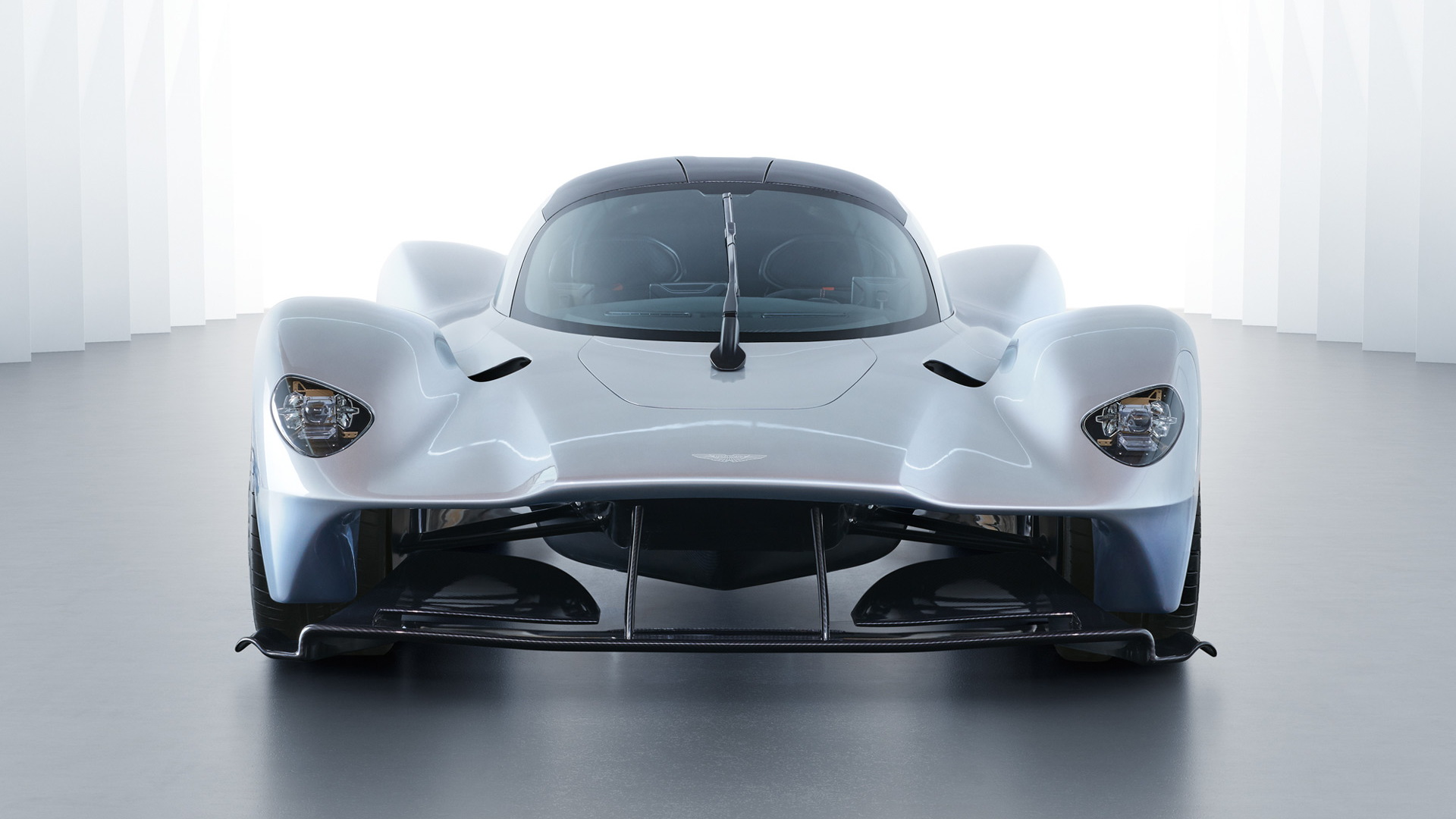Jaws all over the world collectively dropped last summer with the reveal of a concept showcasing an early design for Aston Martin’s new Valkyrie hypercar being developed in partnership with the Red Bull Racing Formula One team.
However, opposite to what’s usually the case in the auto industry, the production version of the Valkyrie is shaping up to be an even wilder car than the concept.
Aston Martin late on Tuesday revealed a near production-ready example of the Valkyrie, and it’s got even more fins, air channels and aerodynamically shaped surfaces than the concept. According to Aston Martin, the design shown here is 95 percent complete. Some elements will change as the design team, led by Red Bull’s expert aerodynamicist, Adrian Newey, attempts to eke out as much downforce as possible.
Compared to the concept, new air channels designed to add to the overall downforce of the car have been dug into the front wheel arches. They also double as Aston Martin’s famous side strakes—a clear case of form following function. The wheels also feature a flat surface designed to reduce air turbulence. Aston Martin says this controversial design will be an available feature, however.

Aston Martin Valkyrie in near-production form
The teardrop-shaped cabin’s upper surfaces and lower tub contours remain the same as on the concept. They follow the envelope of space available between the massive Venturi tunnels that run the length of the car either side of the cabin’s floor. These help to generate most of the downforce, allowing the upper surfaces to be devoid of additional aero elements and thus retain their clean, almost sensual look.
The rear of the Valkyrie is where most of the changes have occurred. The single exhaust exit of the concept has been replaced by a twin-exit design while the trailing edge of the Venture tunnels now take on a more curved appearance. This curved theme is carried over to the rear wing which is now just a single arch. Also fitted to the car at both ends are the production lights which are full LED units.
In case you’ve forgotten, the Valkyrie will be powered by a mid-mounted 6.5-liter V-12 working in conjunction with a KERS-style hybrid system. The V-12 alone is expected to produce 1,000 hp, making it the most powerful naturally aspirated engine of any production car. An additional 130 hp is expected to be added by the hybrid system’s electric motor. Both power sources will drive the rear wheels only, via a 7-speed transmission of undisclosed type.
Amazingly, we've heard that the power-to-weight ratio could exceed 1:1, as measured in horsepower per kilogram. Assuming the 1,130-hp output is accurate, the Valkyrie would tip the scales at sub-Mazda MX-5 Miata levels! Weight-saving measures extend right to the Aston Martin badge which is just 70 microns thick, or about 30 percent thinner than a human hair. The aluminum piece, created using a special chemical etching process, is 99.4 per cent lighter than the regular enamel badge used on Aston Martin cars.
In addition to being one of the lightest cars on the road, the Valkyrie will also be one of the smallest. Despite this, Aston Martin promises that the cabin, though tight, will be able to fit two 98 percentile adults. Aston Martin Design Director Marek Reichman is well over 6.0 feet tall and fits comfortably in the Valkyrie.
Access to the cabin is via small, Le Mans prototype-style gullwing doors. To enter, you step onto the seat and then slide in and adopt a reclined feet-up position just like in a modern F1 racer. A 4-point harness comes as standard, while an optional 6-point harness will be offered for those who intend to do more track driving. Oh, and the seats will be tailored for each buyer.
To keep things as simple as possible, all switchgear is located on the steering wheel, with all the vital signs shown on the main display located on the wheel’s hub. The steering wheel is also detachable, both to aid ingress and egress, and to serve as an additional security device.
Three additional screens feature on the dash. A screen at the base of each of the A-pillars serve as side mirrors, with cameras on the exterior replacing the conventional side mirrors in order to eliminate unwanted aerodynamic disturbance. Similarly, since there’s no rear windshield, a rearview mirror has also been replaced by a camera and screen.
Aston Martin will start testing prototypes later this year. The company plans to build just 175 examples. Of these, 25 will be track-only versions. A reveal will take place sometime during 2018 and the first deliveries are scheduled for early 2019. By then, Mercedes-AMG will have launched its own hypercar.






